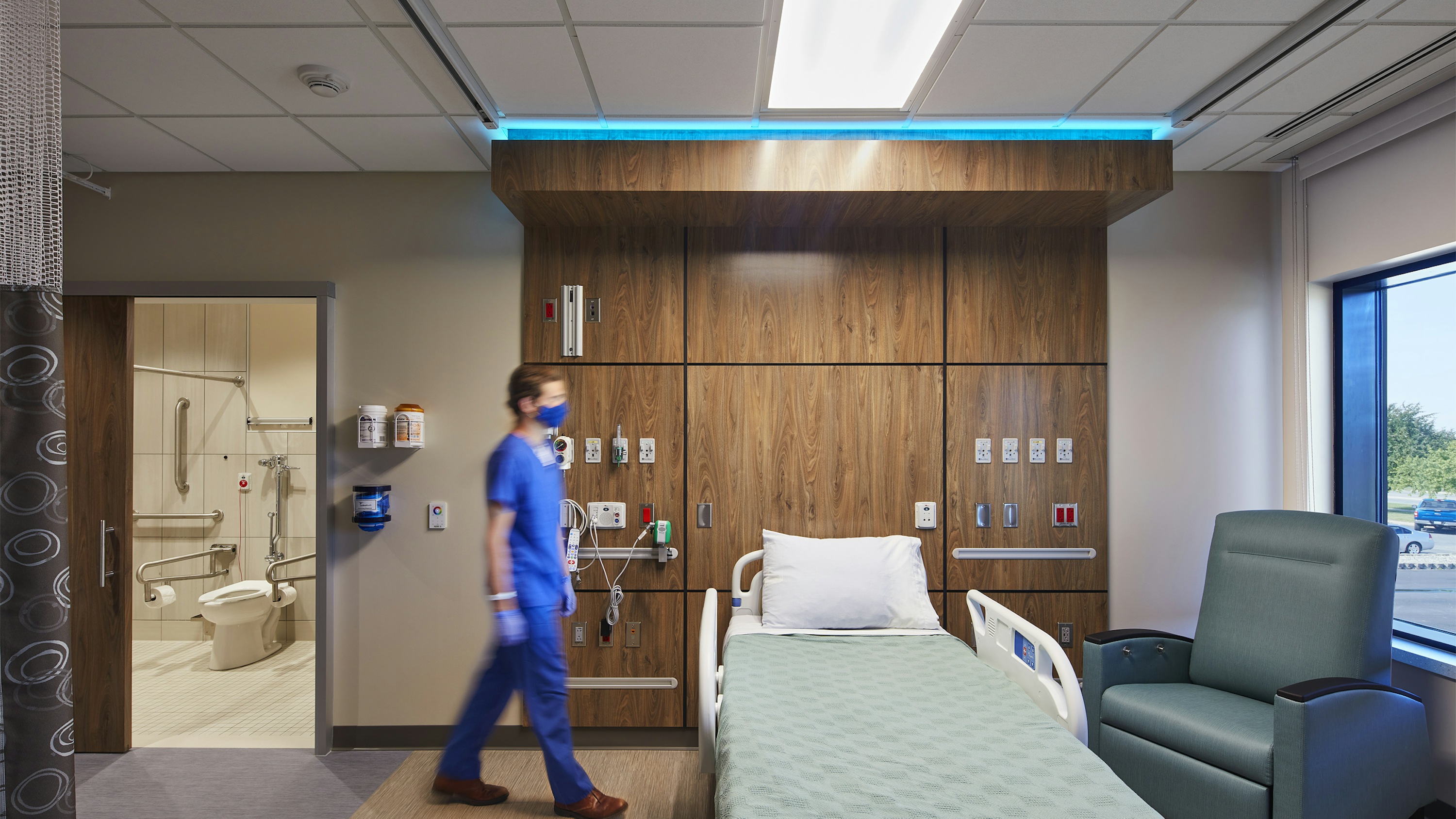
One of Wold’s core values is to go above and beyond to provide superior service that exceeds expectations. As part of our commitment, we monitor changes and trends in the industry to help our clients stay ahead of the curve and remain positioned for success.
Over the past 18 months, we’ve seen a shift in healthcare design planning as designers begin to advance lessons learned from COVID to actionable improvements and change. We recently discussed these learnings with Wold healthcare leaders Josh Ripplinger, AIA, ACHE, EDAC, LEED AP, Partner, and Martin Franks, AIA, Principal. We asked them the following question:
Here's what they said:
Modular structures, drive-thru services at hospitals and parking lot conversions
The idea of using a modular structure similar to a school or office temporary building was unheard of in acute care healthcare environments prior to the pandemic. However, after seeing the benefit on a transient basis of creating triage or low acuity treatment space in these structures, the industry could possibly see their use increase as a means to handle overcrowding or offset pressures beyond the facility’s capacity to bridge the time it takes to design and construct a more permanent solution.
People’s willingness to receive treatment in a drive-thru or temporary setup fashion in exchange for reduced wait times or smaller crowds - and the healthcare industry’s acceptance of providing treatment in these types of conditions - has also led to a surge in alternative means to effectively treat patients.
Flexible use planning of current and future parking ramp structures
While there has always been an eye towards flexibility for future use in planning new healthcare facilities, the focus has now shifted to all aspects of the design, even the support spaces that serve the campus. One of the most unique extensions of this mindset has been planning future parking ramps with flat decks so in the event of another pandemic, the space can be converted into a temporary clinic or permanently converted into a clinic or office space.
Full acceptance and funding of telehealth
Telehealth is not a new technology, but its acceptance by patients, providers, care teams and payors was marginal at best prior to the pandemic. As COVID forced us to accept many alternatives to care, the acceptance of telehealth leaped years ahead and is being incorporated into every healthcare facility we plan. This technology, as well as those supporting home health, is here to stay and is greatly improving the patient experience and health outcomes.
Consumers’ role in their own care
At-home test kits have been an option for consumers for years, but until recently, their use has been isolated to a small percentage of the population. With the surge of COVID-19 and the need to consistently test oneself prior to entering public spaces, many people have made drive-up centers or at-home test kits a part of their normal, self-administered healthcare similar to bandages or over-the-counter medications.
With many consumers widely adopting a way to identify potential health risks and make their own decisions on treatment or quarantine, a new era in an individual’s ability to not only administer their own care, but diagnose it as well, could be on the horizon.
Inclusion of areas of respite for staff
The stress levels of healthcare team members have never been higher. As we look at ways to support stress relief and respite at the facilities we design, many leaders and stakeholders have been including these important spaces and amenities to provide additional care for frontline staff.
The parking lot waiting room
The waiting room of the future is a big topic in the industry right now. From an infection control standpoint, facilities question the need for large waiting spaces, and many consumers’ preferences trend towards smaller, more private setups where social distancing and personal space is of top priority.
We may begin to see a massive shift in the idea of waiting space as paging system technology advances, similar to what we’ve seen in restaurants when a person’s cell phone can be notified when their table is ready. It is very possible that people may be more willing to wait much longer in the safety of their own space with their own devices than in a public setting.
Our expert team is committed to serving as trusted advisors to our clients and industry partners. Do you have a question you’d like to submit for our series or want to connect further with our team? Get in touch today!